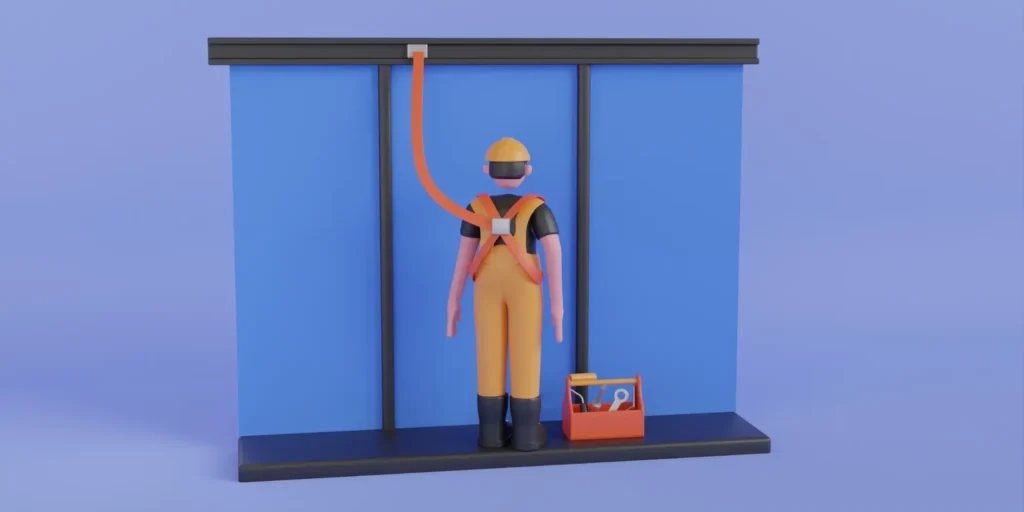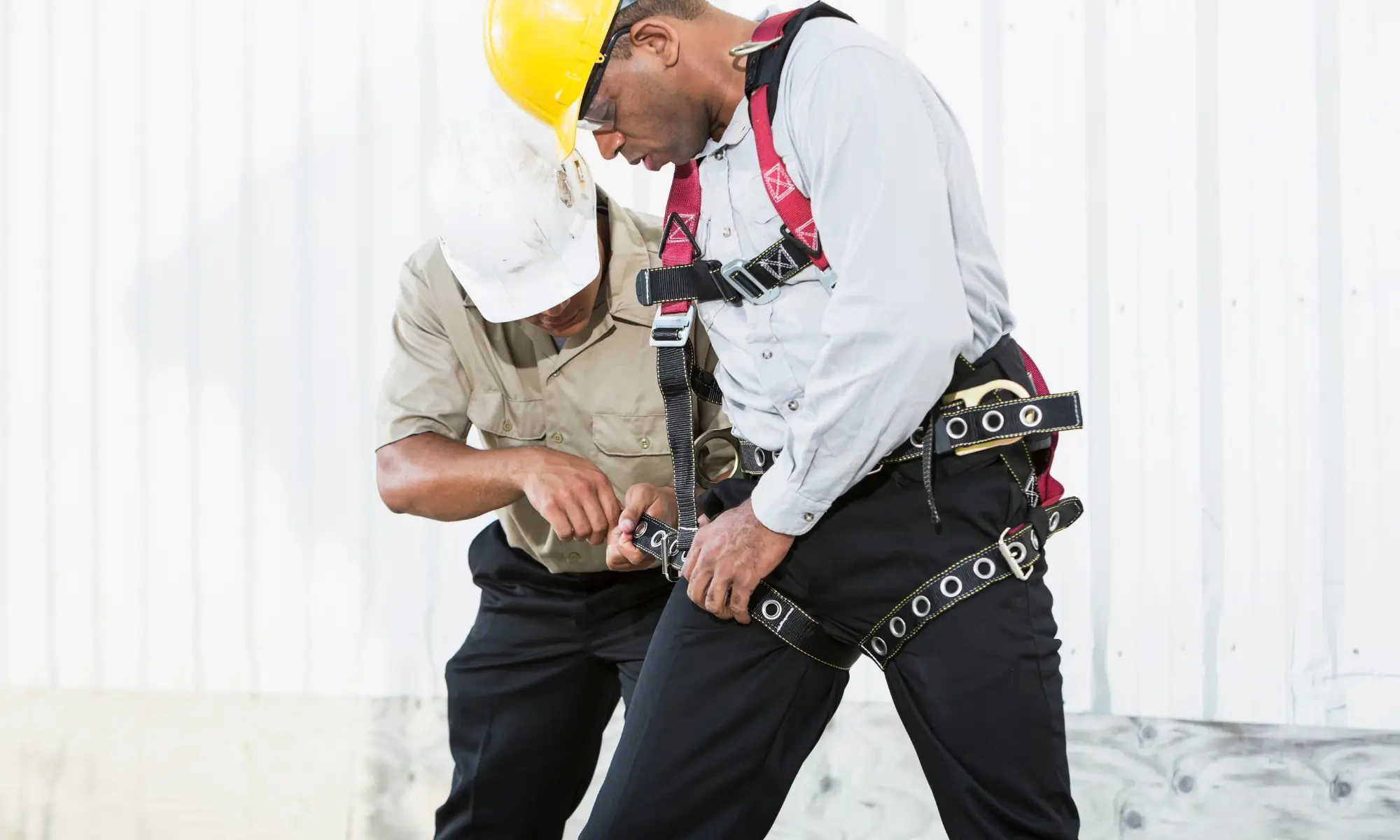Safety harnesses are indispensable tools in various industries, providing critical protection against fall-related injuries and fatalities. As workplaces continue to evolve, the application of safety harnesses has expanded beyond traditional sectors, adapting to the unique challenges of each field. This comprehensive article explores the key uses of safety harnesses across different industries, highlighting their significance, application methods, and best practices to ensure maximum safety.
Key Safety Harness Uses in Different Fields
Safety harnesses play a crucial role across various industries, providing protection to workers from falls and other potential hazards. Here are the key safety harness uses in different fields:

1. Construction Industry
The construction sector is one of the primary users of safety harnesses. Workers on scaffolding, rooftops, and elevated platforms rely heavily on harnesses to prevent falls from significant heights.
Types of Harnesses Used:
- Full Body Harnesses: Distribute fall arrest forces across the shoulders, thighs, and pelvis, reducing the risk of injury.
- Self-Retracting Lifelines (SRLs): Automatically retract to minimize free-fall distance, providing dynamic fall protection.
Best Practices:
- Proper Anchorage: Ensure anchorage points are secure and capable of supporting at least 5,000 lbs per employee.
- Regular Inspections: Conduct thorough inspections before each use and at least annually to identify wear or damage.
- Training: Comprehensive training programs for workers on correct harness usage and anchorage selection.
2. Industrial Maintenance
Maintenance workers often perform tasks at heights, such as repairing machinery, electrical systems, or performing window cleaning in industrial settings. Safety harnesses are crucial in these scenarios to prevent falls during routine maintenance operations.
Types of Harnesses Used:
- Work Restraint Systems: Prevent workers from reaching fall hazards by limiting their movement.
- Fall Arrest Systems: Allow movement while providing a safety net in case of a fall.
Best Practices:
- Risk Assessment: Conduct thorough risk assessments to determine the appropriate fall protection system.
- Clear Anchorage Points: Position anchorage points above the worker to reduce swing fall hazards.
- Rescue Plans: Implement effective rescue strategies to ensure prompt assistance in case of a fall.
3. Window Cleaning and Building Maintenance
Professional window cleaners and building maintenance personnel use safety harnesses to work on high-rise buildings, ensuring their safety while performing tasks like window washing, facade inspections, and structural maintenance.
Types of Harnesses Used:
- Suspension Systems: Allow workers to be vertically lowered and supported, providing hands-free operation.
- Vertical Lifelines: Facilitate movement along the building’s facade while maintaining a secure connection.
Best Practices:
- Energy-Absorbing Lanyards: Utilize lanyards with built-in shock absorbers to reduce impact forces during a fall.
- Continuous Connection: Ensure workers remain connected to the lifeline at all times to prevent free falls.
- Equipment Maintenance: Regularly clean and inspect suspension systems to maintain their integrity.
4. Telecommunications
Telecommunication technicians often install and maintain equipment on towers and other elevated structures. Safety harnesses are essential to protect these workers from the inherent risks of working at significant heights.
Types of Harnesses Used:
- Full Body Harnesses with Specialized Connectors: Designed to accommodate the specific movements and equipment used in telecommunications work.
- Rope Grab Systems: Allow for controlled movement along vertical lifelines while providing fall arrest capabilities.
Best Practices:
- Secure Anchorage Points: Install anchorages that can support dynamic loads and are resistant to environmental factors.
- Tailored Training: Provide training specific to telecommunications work, focusing on tower climbing and equipment handling.
- Regular Inspections: Implement stringent inspection routines to ensure harnesses and connectors remain in optimal condition.
5. Oil and Gas Industry
Workers in the oil and gas sector often operate in challenging environments, including confined spaces, offshore platforms, and elevated workstations. Safety harnesses are vital for ensuring their protection against falls and accidents.
Types of Harnesses Used:
- Full Body Harnesses: Offer comprehensive protection and are suitable for the demanding conditions of the oil and gas industry.
- Retrieval Systems: Facilitate the safe retrieval of workers from confined spaces in emergency situations.
Best Practices:
- Rigorous Inspection Protocols: Conduct frequent and detailed inspections due to the harsh working conditions.
- Enhanced Training Programs: Focus on the specific hazards and emergency response procedures relevant to the oil and gas environment.
- Robust Anchorage Systems: Utilize heavy-duty anchorage points capable of withstanding extreme forces and environmental stressors.
6. Entertainment Industry
In the entertainment sector, safety harnesses are used extensively for stunts, stage setups, rigging, and other activities that involve working at heights or performing aerial maneuvers.
Types of Harnesses Used:
- Specialized Performance Harnesses: Designed for flexibility and comfort while allowing a full range of motion.
- Dynamic Fall Arrest Systems: Provide protection without restricting the performer’s movements excessively.
Best Practices:
- Customized Equipment: Tailor harnesses to fit the specific needs of performers and riggers.
- Safety Rigging: Ensure that all rigging systems are professionally installed and regularly inspected.
- Rehearsal Protocols: Incorporate safety checks and rehearsals to prepare for emergency scenarios during performances.
7. Maritime Industry
Maritime workers, including deckhands, shipbuilders, and maintenance personnel, use safety harnesses while working on ships, docks, and offshore platforms to prevent falls overboard or from elevated structures.
Types of Harnesses Used:
- Full Body Harnesses: Provide comprehensive protection suitable for the dynamic environment of maritime operations.
- Rescue Harnesses: Equipped with additional features to facilitate quick and safe rescues in case of a fall.
Best Practices:
- Corrosion-Resistant Equipment: Utilize harnesses and connectors made from materials that resist saltwater corrosion.
- Secure Anchorage Points: Install multiple anchorage points to accommodate different tasks and movement areas.
- Regular Training: Educate workers on the unique challenges of maritime environments and proper harness usage.
8. Agriculture
Agricultural workers often perform tasks in elevated areas, such as silos, grain bins, and elevated storage facilities. Safety harnesses are essential to protect these workers from falls in environments that may lack permanent fall protection systems.
Types of Harnesses Used:
- Work Restraint Systems: Prevent workers from reaching fall hazards by limiting their movement within safe areas.
- Fall Arrest Systems: Provide protection in case of accidental falls from elevated platforms or structures.
Best Practices:
- Portable Anchorage Solutions: Implement mobile anchorage points that can be securely attached as needed.
- Environmental Considerations: Choose harnesses that can withstand exposure to dust, moisture, and other agricultural elements.
- Comprehensive Training: Ensure workers are trained in both the use of harnesses and the specific hazards present in agricultural settings.
9. Mining
Miners working in underground mines, shafts, and tunnels utilize safety harnesses to protect against falls in confined and potentially unstable environments. Harnesses are crucial for tasks such as roof bolting, equipment maintenance, and tunnel excavation.
Types of Harnesses Used:
- Confined Space Harnesses: Designed for flexibility and ease of movement in tight spaces.
- Vertical Lifeline Systems: Allow miners to move safely along vertical shafts while maintaining a secure connection.
Best Practices:
- Robust Inspection Regimes: Due to the demanding conditions underground, regular and thorough inspections are mandatory.
- Specialized Training: Focus on confined space safety, emergency evacuation procedures, and proper harness usage.
- Integrated Safety Systems: Combine harnesses with other safety equipment like helmets, gloves, and respiratory protection for comprehensive protection.
10. Emergency Services and Rescue Operations
First responders, including firefighters, paramedics, and rescue teams, use safety harnesses during operations that involve high-angle rescues, building evacuations, and other high-risk scenarios where falls are a potential hazard.
Types of Harnesses Used:
- Rescue Harnesses: Equipped with multiple attachment points and designed for quick deployment during emergencies.
- High-Strength Harnesses: Capable of withstanding the intense forces generated during dynamic rescue operations.
Best Practices:
- Rapid Deployment Training: Ensure that emergency personnel can quickly and efficiently don harnesses during critical situations.
- Regular Drills: Conduct frequent rescue drills to maintain proficiency and readiness.
- Equipment Maintenance: Implement stringent maintenance schedules to guarantee that all harnesses are in optimal condition.
Conclusion
Safety harnesses play a pivotal role in protecting workers across a myriad of industries from the devastating consequences of falls. Their application varies widely, tailored to meet the specific demands and hazards of each field. However, regardless of the industry, the fundamental principles of proper harness selection, secure anchorage, regular inspections, and comprehensive training remain consistent. By adhering to these best practices, organizations can ensure the safety and well-being of their workforce, fostering a culture of safety that is both proactive and preventative.
Investing in quality safety harnesses and maintaining rigorous safety protocols not only complies with regulatory standards but also significantly reduces the risk of accidents, ultimately saving lives and promoting a secure working environment.

